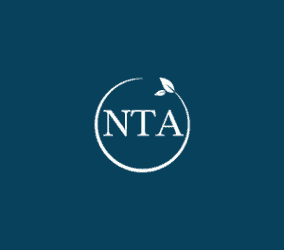
Reviving the Benefits of Raw Honey: Going Back to Basics
Blog
Reviving the Benefits of Raw Honey: Going Back to Basics
By Dominique Eugene, MA, LMFT, RPTS, NTP & Melinda Nelson, RDH, NTP, Beekeeper
There are those who argue it is ridiculous to consider how honey was used in ancient times as being useful in modern day. Others may preach how the chemical breakdown of honey has a negative nutritional impact on the body. Some will even dismiss bees and their products as being “nonsense”, not really having any healthful properties. Consider for a minute how many things in nature have been proven helpful to mankind in easing ailments; wheat-grass, Aloe Vera, for that matter, all herbs used to support and heal our bodies, along with fruits and vegetables. Why couldn’t honey be useful internally? As society becomes fed up with being overdosed, dumbed down, overfed and numbed a revitalized interest in natural cures is making a come back. The possibility of the many uses of honey is being studied and has been supported by research. In recent years, more information is coming out in favor of honey as a better alternative sweetener because it is not refined sugar.
If one wishes to argue that honey is “manufactured from nectar picked up from flowers by the bees—then predigested, vomited and stored for their own future use with preservative added” (Burroughs, p. 18) then it is understood why animosity exists towards any kind of benefit that honey would have. The National Honey Board (NHB, www.honey.com) reports “82 percent of households currently use processed honey, which has been heated and pasteurized, and can contain botulism and High Fructose Corn Syrup, (HFCS). Processed honey is not as antibacterial as raw honey, and is dangerous for diabetics and infants under 12 months old” (http://tinyurl.com/3hfkyh).
Processed honey is just another refined sugar, habit forming because it is a strong stimulant. It causes an excessive reaction because it needs to be oxidized by the gastrointestinal tract creating a toxic environment and a “variety of digestive ills.” Like an explosive fuel it burns with intense heat and burns out quickly, causing a shock effect on the nervous system and other organs. Similar to the effects of some drugs, the organs work very hard and very fast with no nutritional benefits. The exhilaration is followed by a crash leaving the body craving for another fix (Beck, p. 30).
What about raw honey not gathered as mentioned above? What about the modern day believers and researchers that say “raw honey is the safest sugar to use, but you should not use it in excessive amounts” (www.mercola.com, pure gold raw honey). That disclaimer does go on to say “if you have elevated insulin/leptin levels you will need to minimize your use of any sugar–including raw honey”. Can it be that honey has beneficial properties, moderation being the key to success?
The ancients used honey as a “special formula for many health concerns–both for food and to support wide range of body functions” (IBID). What is in honey that makes it amongst nature’s most incredible foods? Now that we can test for vitamins and minerals we know honey has both. It is laden with riboflavin, thiamine, pantothenic acid, pyridoxine, nicotinic acid and vitamin C. In fact, the more pollen in the honey the more Vitamin C it has (Beck, p. 20).
According to studies that have been done and reported on www.naturalnews.com raw, unprocessed honey is known to be “a superfood that provides antioxidants, minerals, vitamins, amino acids, enzymes, carbohydrates, and phytonutrients.” Raw honey digests faster requiring little to no energy to burn off without oxidation, no shock to the nervous system or organs, and no cravings (Beck, p. 30). It is known to increases calcium absorption, hemoglobin count, and to treat or prevent anemia caused by nutritional factors. Raw honey can help arthritic joints. It fights colds and respiratory infections. It helps boost gastrointestinal ulcer healing. It works as a natural and gentle laxative, aiding relief of constipation. It supplies instant energy without the insulin surge caused by white sugar and it is known to be helpful against allergies and hay fever.
We believe people should do research to ensure quality choices. It’s not good enough to trust that all honey is natural. Store bought honey can have additives and be stripped of its important nutritional value. We hope to demystify raw honey and advocate a revival due to its many nutritional benefits. The following is a list of studies, associations, and web pages to be used as a starting point.
Apitherapy is the medical use of honeybee products.
From the 1st International Symposium on Honey and Human Health, http://apitherapy.blogspot.com/2007/11/usa-1st-international-symposium-on.html the following is a listing of research symposium reports that discuss the varied topics of honey. Refer to the above link for copies of these researches:
- The Effect of Honey on Prostaglandins
- Honey Protects against the Hypertriglyceridemic effect of Fructose
- Metabolic Risk for Diabetes with Short and Long Term Sleep
- Honey Protects Against Homocysteine Elevation in Rats
- Sleepless in America
- Melatonin and Sleep – a Role for Honey
- Two Studies Relating Melatonin, Sleep and Memory Processes
- Nighttime Caloric Intake is not Associated with Weight Gain
- The Significance of the Regulatory Effect of Liver Glycogen in Human Metabolism
- Honey and Its Effect on the Immune System
- Chronic Stress and Obesity: A New View of “Comfort Food”
- Glucose vs. Fatty Acid Metabolism in the Human
- The Importance of Adequate Liver Glycogen during Recovery Sleep
- Honey, Sleep and the HYMN Cycle-1
- Physiology of Sleep and Psychology of Dreams
- Honey, Mental Fatigue (Neurasthenia) and Physical Fatigue (Myasthenia)

